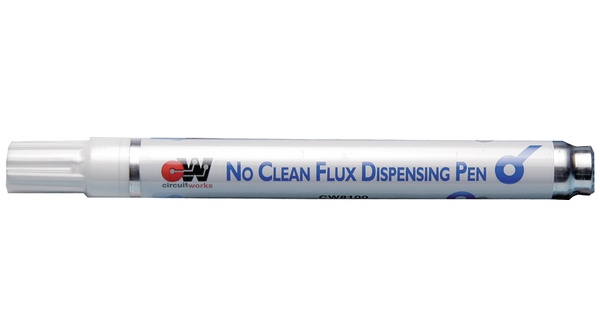What is flux for?
Easybom learned that in electronics components manufacturing when two metal surfaces need to be joined together with solder, flux functions to provide a smooth metallurgic bond between them. Flux helps to remove the oxide layer on the surface of the welding material and reduces the surface tension between the liquid tin and the welded material, which enhances the flow and infiltration of the liquid tin.
Specifically speaking, in the oxidations-removing process, the main role of the flux is the activating agent in the flux, which can quickly remove the oxide of the pad and component pin, and sometimes protect the welded material from oxidation before the welding is completed.
In addition, while removing the oxide film, the surfactant in the flux also begins to work, which can significantly reduce the surface tension of the liquid solder on the surface of the welded material, enhance the fluidity and spreading ability of the liquid solder, and ensure that the tin solder can penetrate into every fine brazing gap.
In the tin furnace welding process, when the solder leaves the liquid tin surface at the moment, because of the wetting effect of the flux, the excess tin solder will flow down the pin, so as to avoid pointed, continuous welding and other bad phenomena.
Thus, the soldering process easily goes wrong without the participation of the flux.
Types of Flux
Flux can be left on the surface and corrosions down the line might occur consequently. Therefore, flux can be generally classified according to different flux removers that are appropriate for their cleaning needs. Easybom search across the market and found three main types of fluxes.
- Rosin activated flux (RA)
Combined with rosins, solvents, and aggressive activators, this kind of flux needs to be cleaned up with typical chemical solvents. It’s widely used in lots of applications for its spectacular soldering abilities, but most of the time it’s not suitable for sensitive surface because of an amount of residue left behind.
- Water soluble flux (OA)
Water soluble flux, also named organic acid flux, is the one that can be removed with water or alcohol. Usually, it’s more aggressive than casual rosin activated flux, of which the result is that thorough cleaning procedures are necessary. - No-Clean flux
When it comes to No-Clean flux, there’s a significant advantage that make it stand head and shoulders among the three fluxes: it leaves no residue behind after the soldering is done. So no further flux mover is required.
The use of this kind of flux can not only save the investment in cleaning equipment and cleaning solvents, but also reduce the environmental pollution caused by the discharge of waste as and wastewater. Therefore, using cleaning-free flux instead of traditional flux has important economic and social benefits.
What characteristics should a Qualified No-Clean Flux Has
- Considerable wetting rate or spreading area.
- No residue after welding.
- The plate surface is dry after welding and does not stick to the plate surface.
- High enough surface insulation resistance.
- The chemical properties are stable at room temperature and there is no corrosion after welding.
- The ion residue should meet the requirement of no cleaning.
- Have the ability to test online.
- No solder ball, no bridge.
- Non-toxic, no serious odor, no environmental pollution, safe operation.
- Good solderability and easy to operate.
- Can be evenly coated by foaming and spraying.
Though No-Clean flux seems a great choice, Easybom wants to call attention to that the outcome of no-clean fluxes can vary depending on their respective chemical composition (for example, No-Clean fluxes containing or not containing rosin makes a great difference).




























